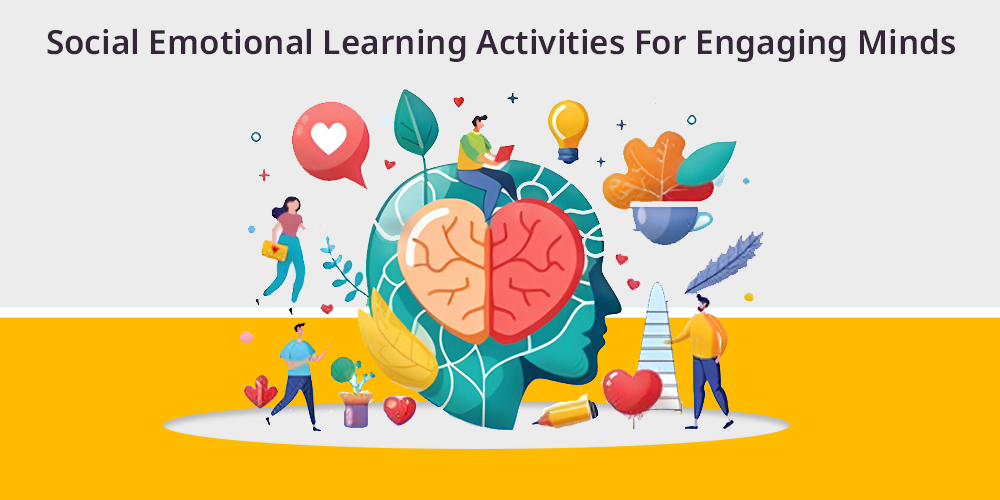
Academic achievement no longer determines success alone so Social Emotional Learning (SEL) became necessary to develop complete persons.
The skills obtained through SEL such as empathy, emotional control, and decision-making become essential for school and lifelong success.
Social Emotional Learning which CASEL (Collaborative for Academic Social Emotional Learning) created, offers five core competencies to advance emotional intelligence. The article examines SEL activities that enhance mental health and strengthen interconnections.
Not just that, they also adjust to different young age ranges and virtual learning environments to create purposeful educational experiences.
Read on further to get a better understanding of Social Emotional Learning activities, its benefits, and other online applications.
Contents
- 1 What is SEL (Social Emotional Learning)?
- 2 Ways in Which Social Emotional Learning Activities Develop Effective Practices
- 3 Different Examples Across Ages in Social Emotional Learning Activities
- 4 Digital Approach Working Best For Social Emotional Learning Activities
- 5 Setbacks: Measures Taken to Leverage Technology in SEL
- 6 Key Takeaways
What is SEL (Social Emotional Learning)?
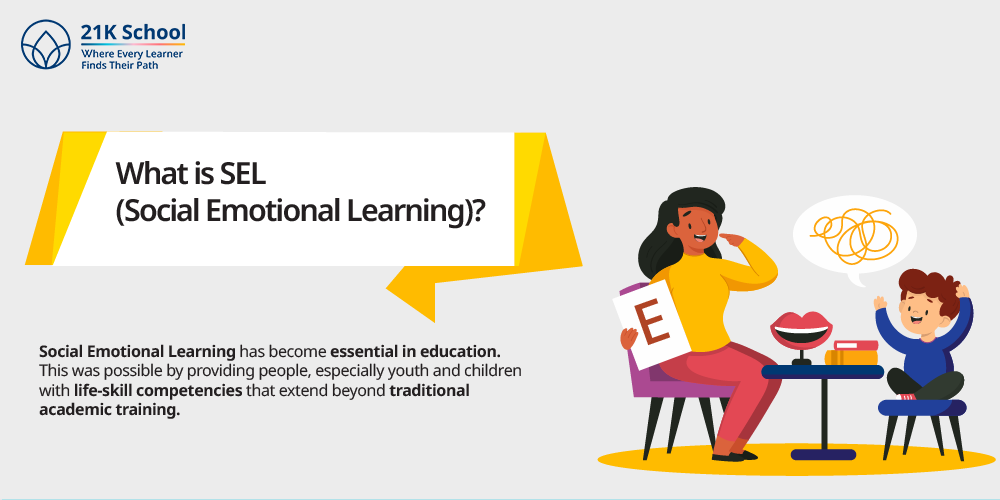
Social Emotional Learning has become essential in education. This was possible by providing people, especially youth and children with life-skill competencies that extend beyond traditional academic training.
SEL establishes its foundation in emotional intelligence and interpersonal development. This is to help people develop emotional perceptions, empathy, and self-control abilities besides strong communication methods.
Through extensive collaboration and research, the term emerged to become the guiding principle of the Collaborative for Academic Social and Emotional Learning. Its official website is CASEL.org.
CASEL which began operations in 1994 has created a recognized SEL framework that organizes itself into five fundamental competencies.
- Self-awareness: Recognizing emotions and values.
- Self-management: Regulating emotions and behaviors.
- Social awareness: Showing empathy and understanding.
- Relationship skills: Forming positive relationships.
- Responsible decision-making: Making ethical and constructive choices.
Educational inclusion of these competencies enables schools to produce students who become emotionally intelligent enough to face complex life situations.
Ways in Which Social Emotional Learning Activities Develop Effective Practices
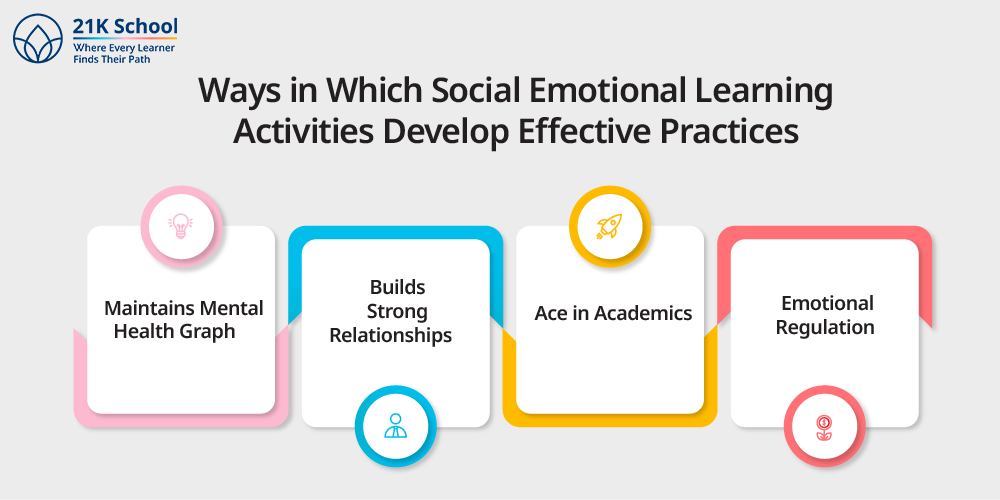
All educational institutions must understand that Social Emotional Learning activities present a necessary structure for students.
This is to help them attain well-being along with success and fulfillment in life. Social emotional learning strategies produce four main impacts:
1. Maintains Mental Health Graph
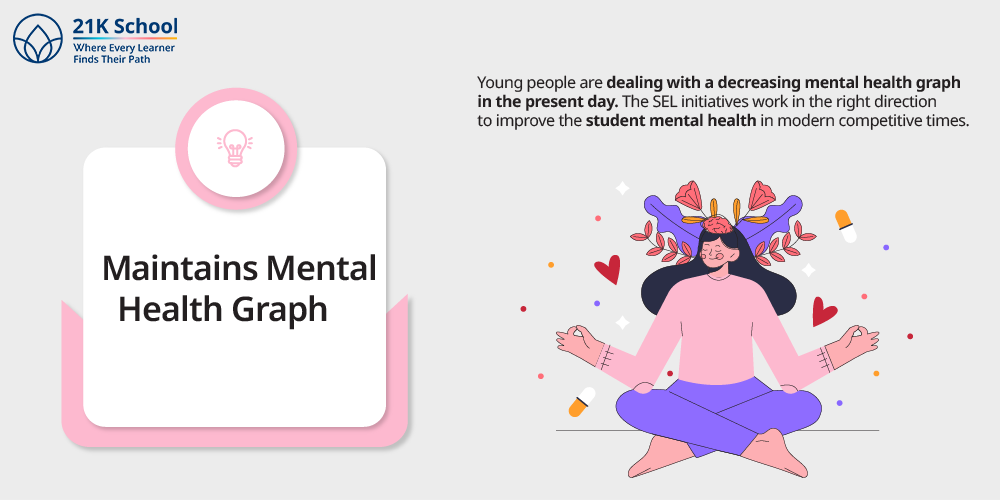
Young people are dealing with a decreasing mental health graph in the present day. The SEL initiatives work in the right direction to improve the student mental health in modern competitive times.
The structured emotional outlet provided by SEL activities includes journaling, mindfulness, and group reflections.
These exercises enable people to identify their stressors while developing healthy ways to express emotions. Thus, leading to better mental health through the passage of time.
2. Builds Strong Relationships
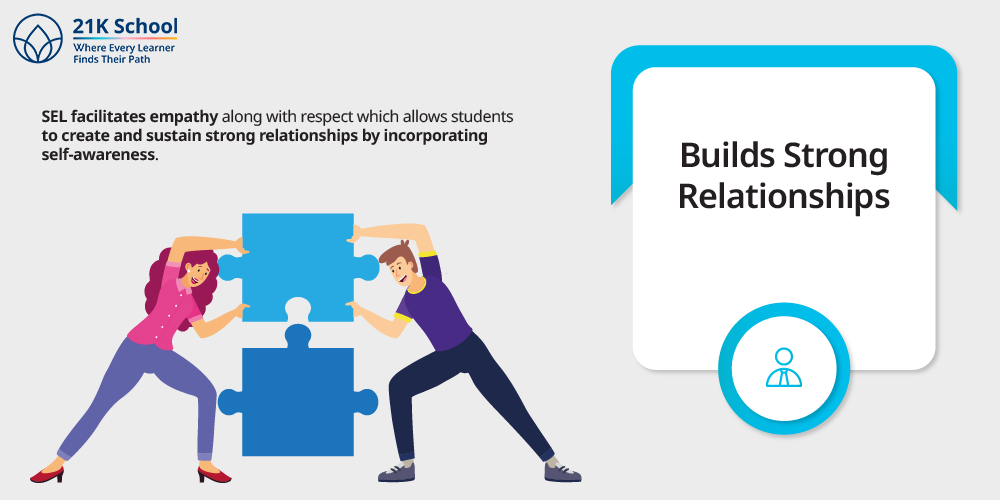
SEL facilitates empathy along with respect which allows students to create and sustain strong relationships by incorporating self-awareness.
The combination of collaborative games with peer mentoring activities and conflict-resolution provides the learners with understanding teamwork.
Besides it, role-play gives students an opportunity to develop patience while promoting understanding. People in the student community demonstrate increased social responsibility and compassion because of this.
3. Ace in Academics
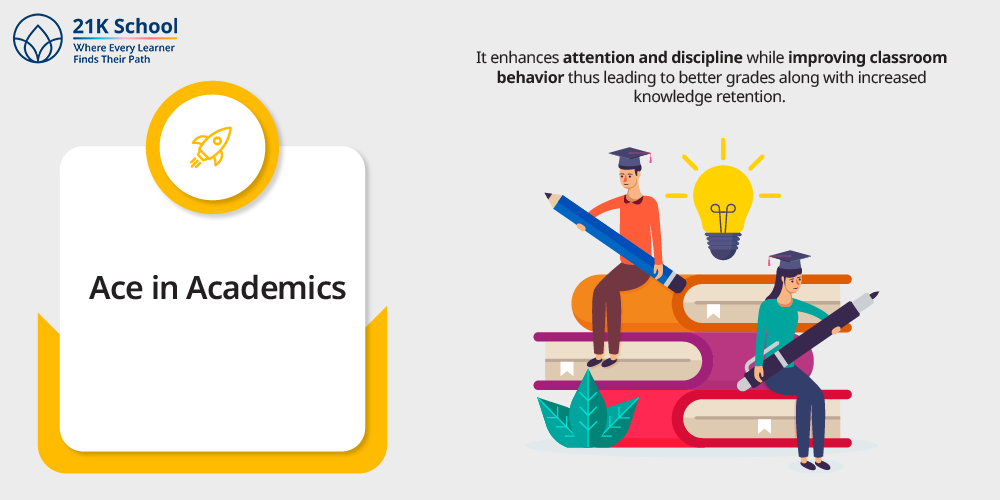
SEL improves learning effectiveness which aids students to ace in their academics.
It enhances attention and discipline while improving classroom behavior thus leading to better grades along with increased knowledge retention.
Academic performance shows a direct positive relationship with social emotional understanding, according to many research investigations.
Students demonstrate enhanced learning engagement after they experience safety, emotional support, and social connectivity.
4. Emotional Regulation
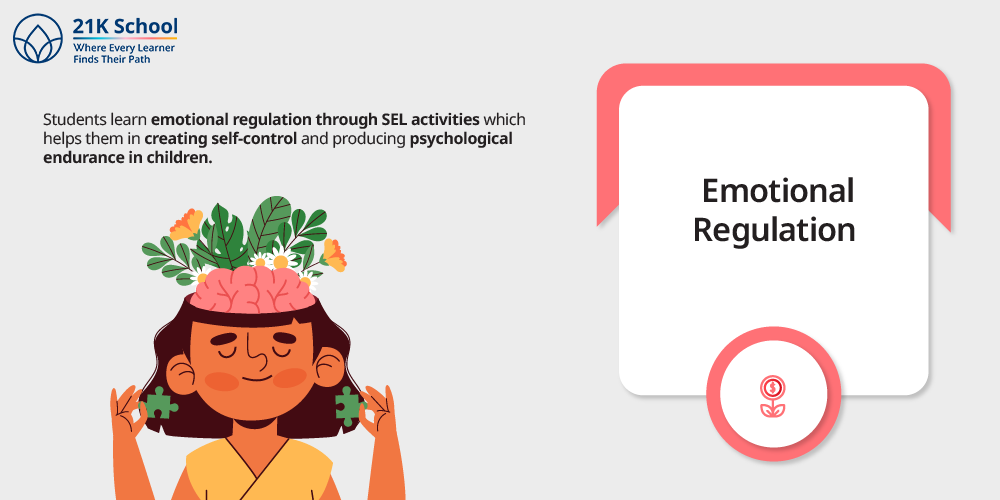
Students learn emotional regulation through SEL activities which helps them in creating self-control and producing psychological endurance in children.
The development of emotional understanding assists children in dealing with their temper tantrums .
Most children experience difficulty both in recognizing and processing their emotional states. These activities include tools that use emotion charades or feelings wheels strategies.
Different Examples Across Ages in Social Emotional Learning Activities
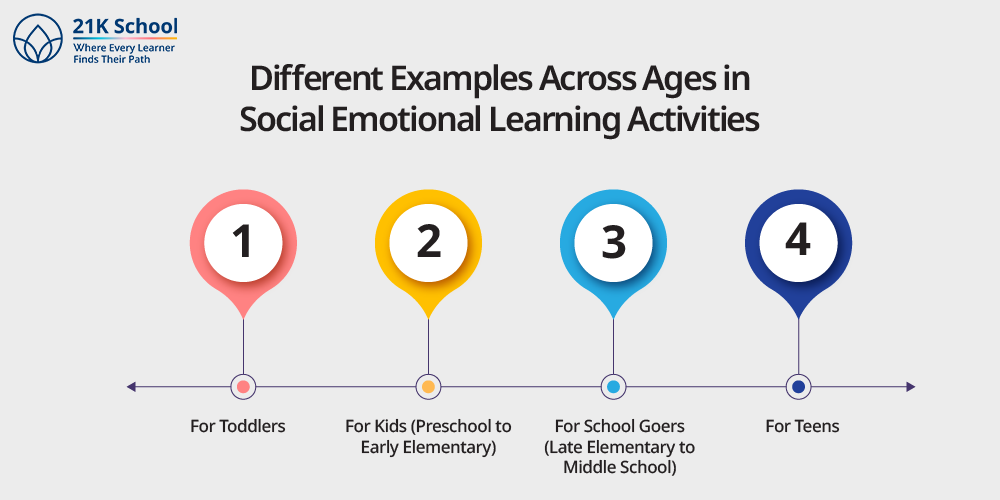
Regardless of age group SEL demonstrates excellent capability to be adapted for different educational levels. The program structures differ across age brackets between toddlers and teens as follows:
1. For Toddlers
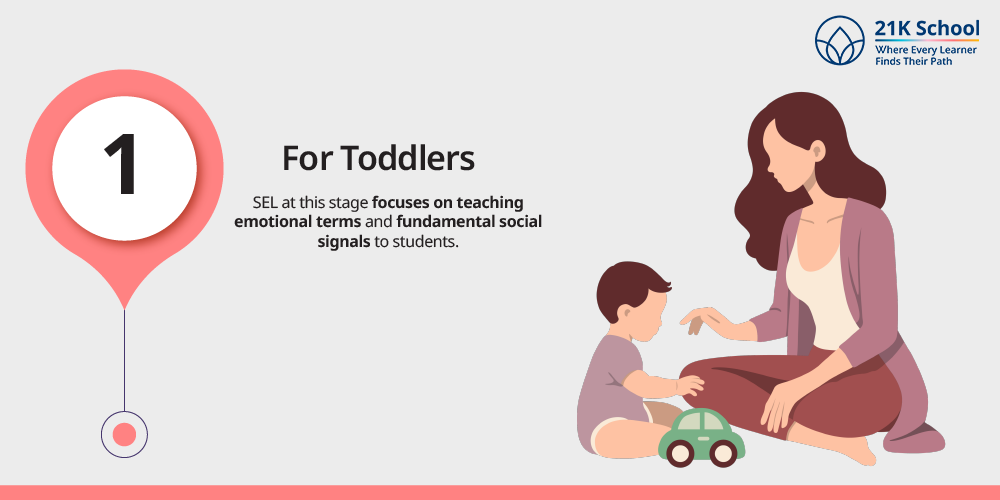
SEL at this stage focuses on teaching emotional terms and fundamental social signals to students. Activities include:
- The emotional identification of toddlers depends on the use of emotion cards.
- Using animated expressions along with puppets, children participate in “Name that feeling” games.
- Storytime includes reading emotional context books which show characters going through various emotional experiences.
2. For Kids (Preschool to Early Elementary)
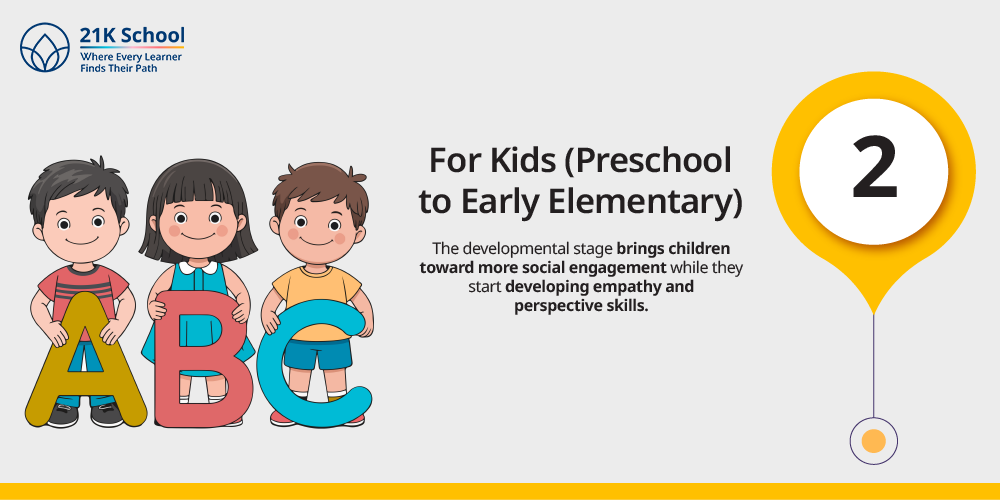
The developmental stage brings children toward more social engagement while they start developing empathy and perspective skills.
- During circle time children spend their moments discussing what happened with them throughout the day and their emotions.
- Buddy tasks-to build teamwork.
- A scenario based on “How would you feel if” allows for the development of empathy.
3. For School Goers (Late Elementary to Middle School)
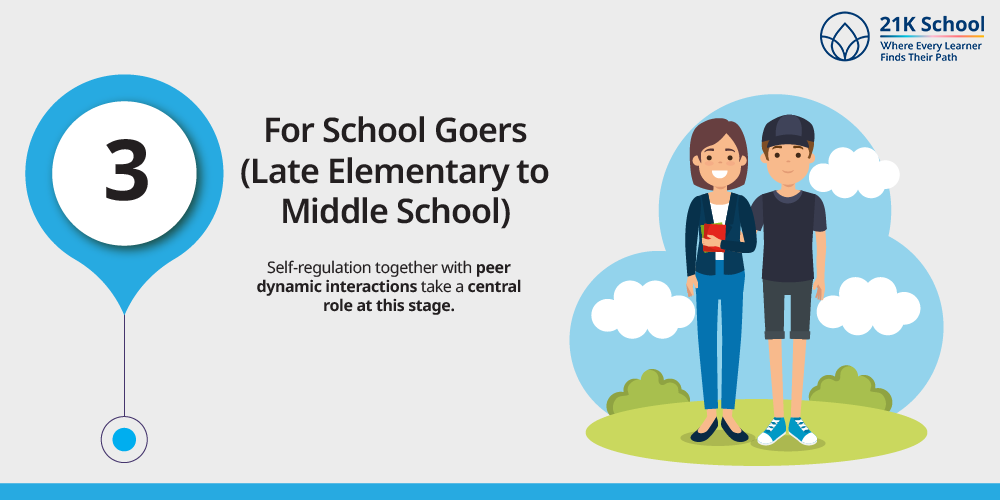
Self-regulation together with peer dynamic interactions take a central role at this stage.
- Role-playing social situations-for conflict resolution.
- Students benefit from sharing their thoughts through jointly kept journals or reflection walls.
- Schools use emotion thermometers as a visual tracking system for students’ emotional states.
4. For Teens
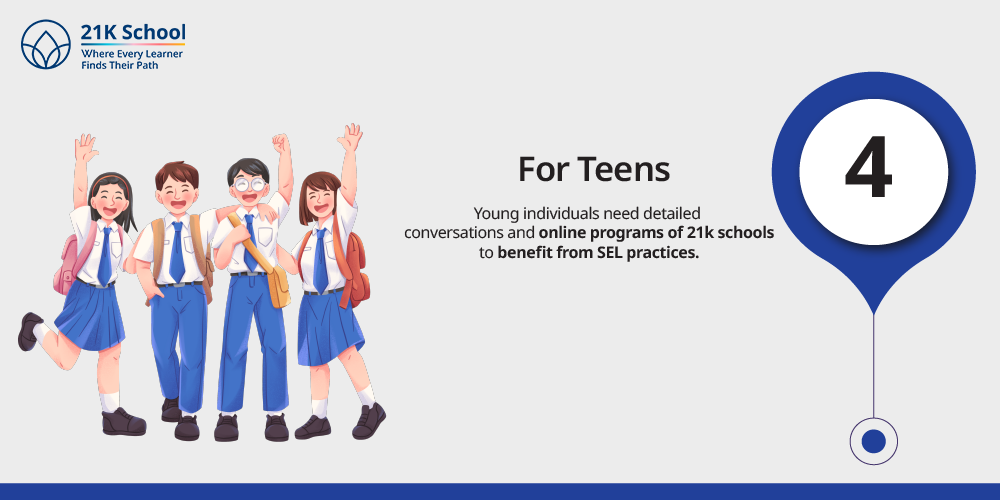
Young individuals need detailed conversations and online programs of 21k schools to benefit from SEL practices.
- Building leadership along with empathy becomes possible through peer mentoring programs.
- The circle of debate and dialogue helps students to discuss social topics with respect.
- Students develop goals through activities which connect emotional awareness to designing their future direction.
Digital Approach Working Best For Social Emotional Learning Activities
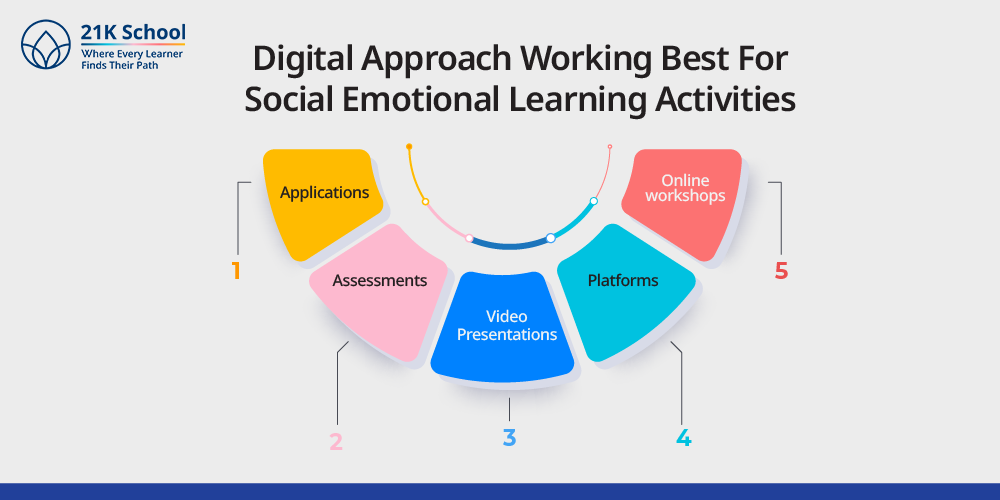
The transformation of education through technology requires social emotional learning to transform also. Digital implementation of SEL requires both creative solutions with rigid organizational frameworks.
1. Applications
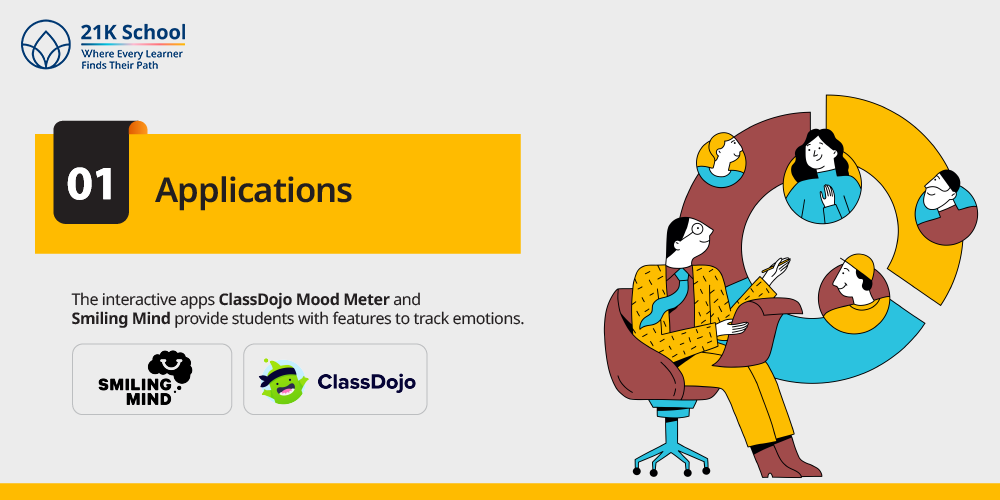
The interactive apps ClassDojo Mood Meter and Smiling Mind provide students with features to track emotions.
Write gratefulness entries and participate in mindfulness activities in classrooms during school time.
2. Assessments
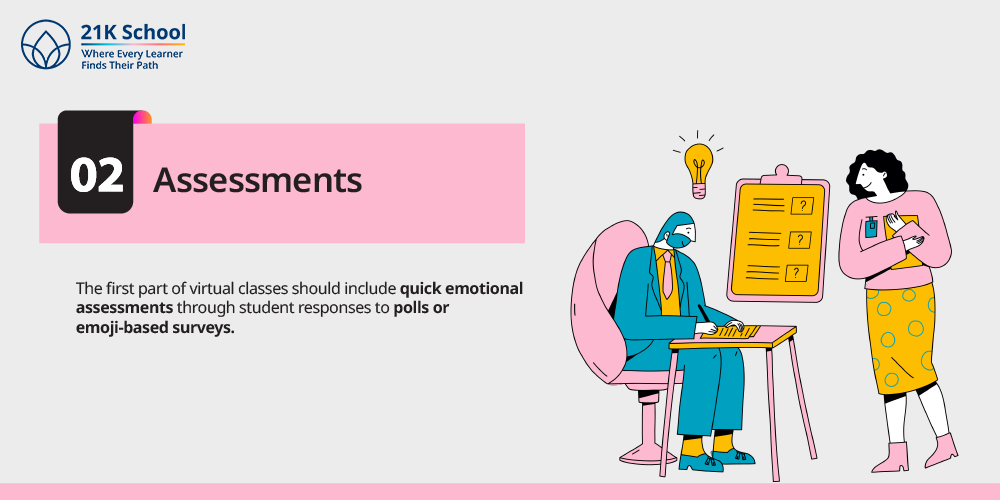
The first part of virtual classes should include quick emotional assessments through student responses to polls or emoji-based surveys. Further description of moods can be enclosed direct chat input.
3. Video Presentations
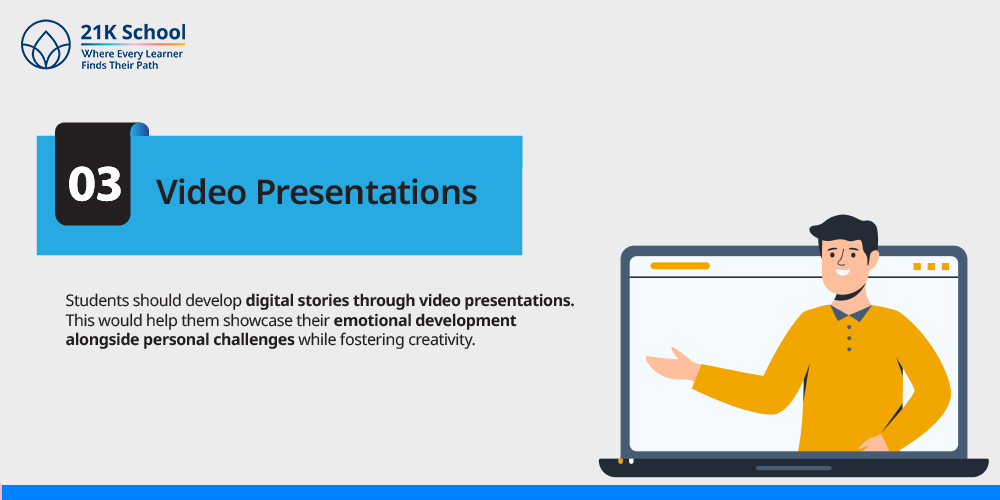
Students should develop digital stories through video presentations. This would help them showcase their emotional development alongside personal challenges while fostering creativity.
4. Platforms
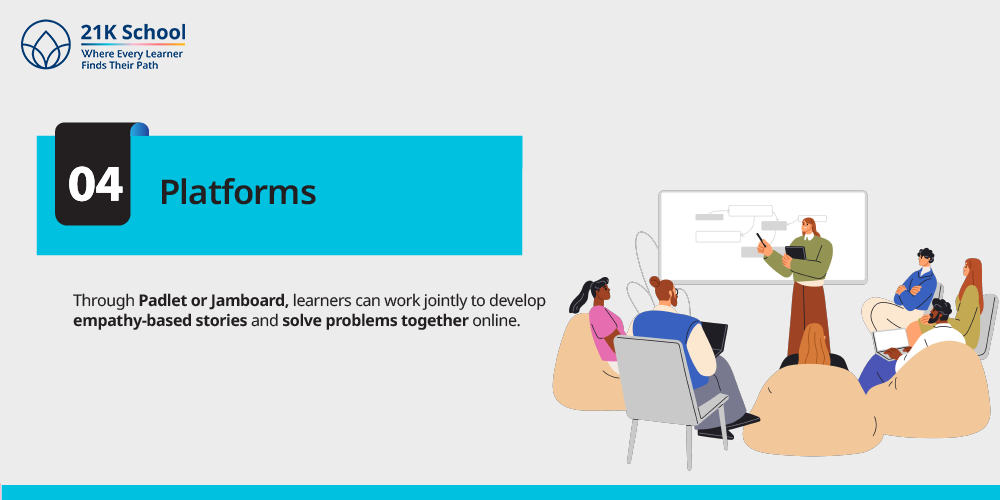
Through Padlet or Jamboard, learners can work jointly to develop empathy-based stories and solve problems together online. This can teach developing bonds and create a collaborative culture.
5. Online workshops
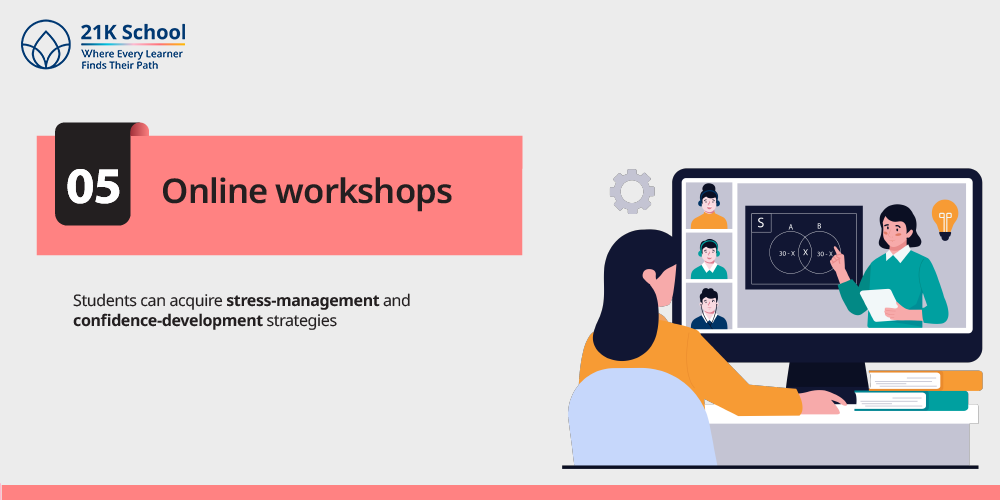
Students can acquire stress-management and confidence-development strategies. Demonstrating these approaches during online workshops brings subject matter experts to address mental health needs.
Setbacks: Measures Taken to Leverage Technology in SEL
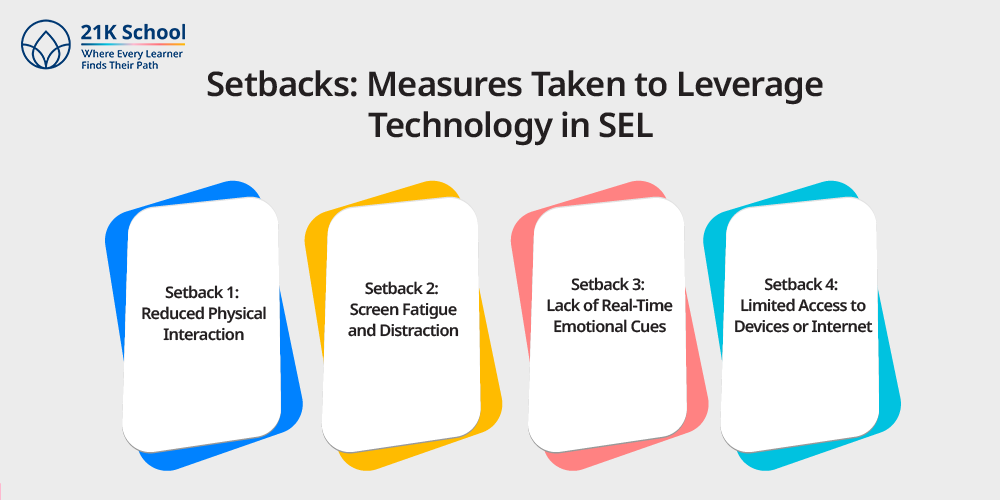
Digital SEL implementation ensures flexibility but service providers must overcome multiple implementation challenges.
Setback 1: Reduced Physical Interaction
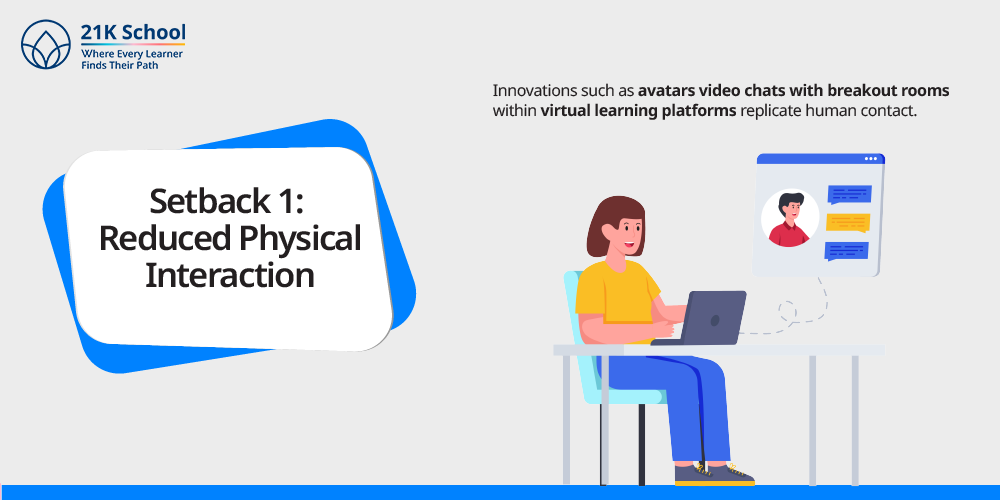
Innovations such as avatars video chats with breakout rooms within virtual learning platforms replicate human contact. This can create more personable and emotionally enriching exchanges.
Setback 2: Screen Fatigue and Distraction
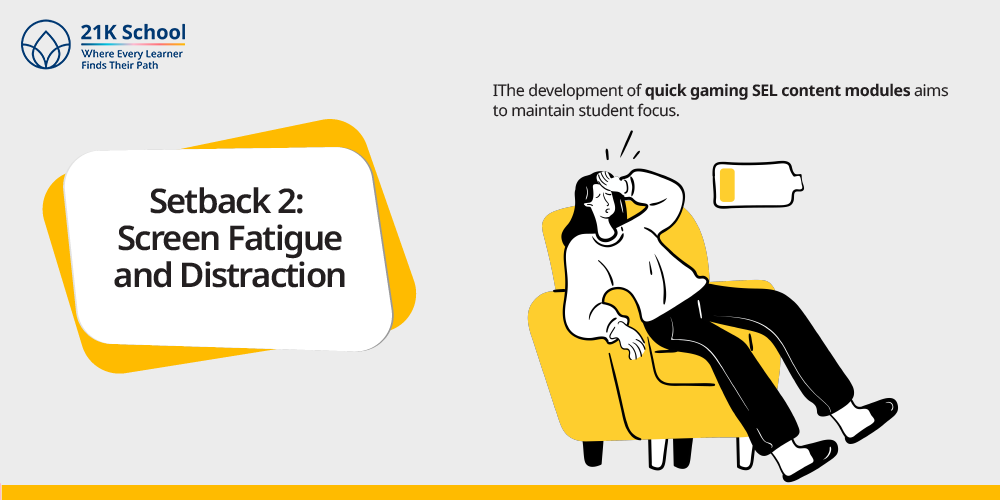
The development of quick gaming SEL content modules aims to maintain student focus. SEL-themed quizzes within Blooket and Kahoot! are to create exciting engagements for learning purposes.
Also read: 4 ways to limit screen time to save yourself from visual exhaust and improve concentration.
Setback 3: Lack of Real-Time Emotional Cues

Educators receive training about recognizing emotional signs from voice volume, student involvement patterns, and messaging frequency during remote classes.
So that they can detect emotional cues. The research also explores AI-based sentiment analysis tools.
Setback 4: Limited Access to Devices or Internet
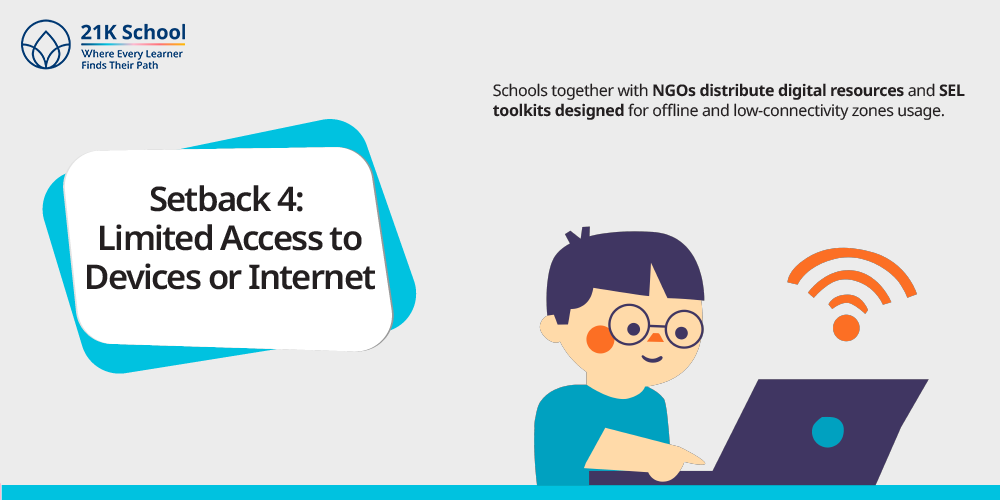
Schools together with NGOs distribute digital resources and SEL toolkits designed for offline and low-connectivity zones usage.
Through these measures students can learn without thinking about the geographical boundaries they live in.
Key Takeaways
Social Emotional Learning transforms education from a supplemental educational experience into a developmental process.
The primary focus of this method of teaching is to reshape mental well-being, emotional development and social relationships of juveniles.
The activities of social emotional learning help kids from young ages to develop essential growth including empathy and resilient skills.
Technology integration requires social emotional learning to evolve. However, proper design and sufficient support systems ensure its continuous development.
Educational programs follow a consistent purpose to develop mindful students.
So that the new generation adopts compassion and social acumen for post-school reality regardless of digital or traditional teaching methods.


